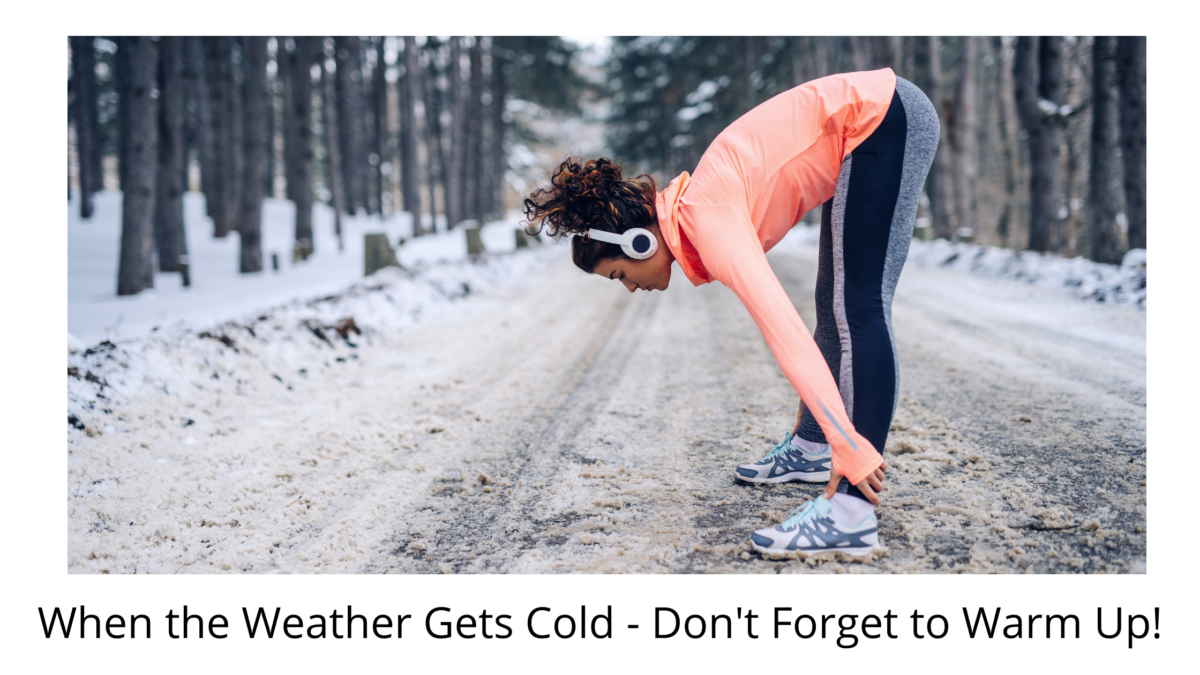Colder weather means that we should consider some changes to how we exercise. Of course it’s harder to motivate yourself to get outside for a run or bike ride when the temperature drops, and the shorter days compress our schedules, but there are changes in your body that affect your ability to exercise too. For many people with arthritis or other joint problems, cold weather brings more complaints of pain. Also, to stay warm, our bodies narrow blood vessels to reduce blood flow to the skin and to more superficial muscles. That means that there can be an increased risk of muscle strains in the cold. The cold also produces an increased strain on the heart because of the narrowed blood vessels. This isn’t necessarily a bad thing, because the strain of the cold can stimulate the heart muscle to build up just as physical strain on muscles stimulate them to grow. However, for both the heart and the muscles, they key is to apply strain safely. That means that you can indeed be active outdoors safely in the cold. It just also means that you may have to make a few changes to your routine. Here are a few to consider:
Warm up right
A good warm up is always important, but because of the tendency for joints to be stiffer and for blood flow to muscles to be reduced in the cold, it’s even more important that you warm up right at this time of year. To start, do something to get your heart rate up a bit, such as maybe a brisk walk or a light jog. Follow that up with a dynamic warm up rather than static stretches. This could include walking or jogging while pulling your knees up high to your chest. Maybe also add in some high kicks in front of you with straight knees to get your hamstrings loosened. A walking lunge with an upper body twist can get your whole body moving. Cater your warm up to what you have planned in your workout. If you’re not sure how a personalized warm up should look, ask your physical therapist!
Dress right
Dressing in layers allows you to adjust your insulation to your activity level. After you warm up, you might want to take off a layer to avoid getting too hot during your main activity. You’ll have the layer there for later to put back on when your activity level drops and you start getting chilled.
Don’t forget about the sun either – just because it’s cold doesn’t mean the UV rays are gone. Sunscreen and sunglasses aren’t just for the summer. A lip balm with SPF and sun screen for areas of skin that are exposed can protect you not only from the sun but from the wind too.
Stay hydrated
Drink water before, during, and after your workout. The temperature may be down, but you’ll still sweat and you’ll still lose water vapor in your breath. The drier air in winter lets your sweat evaporate more quickly, so it’s easy to underestimate how much fluid you’ve lost.
Cool down
When you’re done, don’t rush to get inside and crawl under a blanket. Cool down properly. Keep moving with a walk or another form of active recovery to let your heart rate come down gradually. After exercise is then an appropriate time for static stretching. You can also follow up your exercise inside with some foam rolling or self massage to help your body to recover.
The days being shorter and the temperatures being lower doesn’t mean you’re that you’re stuck inside for all of your exercise. If you follow these tips, you can safely keep moving outside. If you’d like help developing a customized warm up or cool down, or if you have questions about your cold-weather exercise routine, your physical therapist is a great person to ask! A consultation about winter exercise might be a great gift to yourself as you head into a new year.

